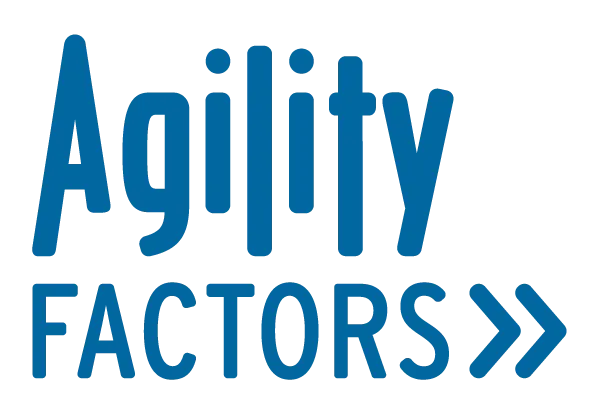
Lean-Agile Life
In a recent conversation with my wife, I suggested we consider an experiment to apply Lean-agile to our personal life. I suggested that since she is a Lean blackbelt and I teach Lean-Agile and business agility, we should embrace the principles we instill in others.
Many of the Lean-Agile principles and tactics can help an individual or family improve the way they work together to strengthen relationships and achieve goals.
What is Lean?
In business, Lean is a philosophy and a collection of organizational management practices that was popularized in the late 1980’s through the mid-1990’s. The genesis of Lean came from the Toyota car company. Toyota implemented it very well.
Lean management is defined as:
A principle-based management system focused on creating value for end-use customers and eliminating waste, unevenness, and unreasonableness using the scientific method.
Lean management employs the following key principles:
Continuous Improvement
Respect for People
Lean management embodies key objectives such as:
Create Value for Customers
Pursue Stable Long-Term Growth
Achieve Balance & Harmony
Innovate to Improve Products and Processes
Real Lean management pursues four basic goals:
Eliminate Waste
Reduce Cost
Improve Quality
Increase Speed and Response Times
What Is Agile?
When most people think of agile, they think of the lightweight method of project management, used especially for software development, that is characterized by breaking work into small deliverables and delivering progressive amounts of value to the customer in short iterations of work. Agile teams frequently assess and improve how they are doing their work.
Agile is more than a framework. It’s a mindset.
The goal of a agile software development team member is to provide value to the customer in the form of quality working software (the product). The customer could be internal or external to the organization.
The goal of an agile sales team member is to sell. The product the team is creating is the sales target. The sales target is made up of multiple closed deals. In order for a sales team to build their product, individual team members build relationships, identify potential sales opportunities and close deals by convincing the prospect they are the best solution to meet the prospects’ needs.
Lean-Agile
Agile becomes Lean-Agile when you combine the principles from the Agile with Lean thinking.
There are benefits to becoming a Lean-Agile organization:
Lean-Agile organizations deliver customer value quicker with high
quality. Quicker value to the customer results in quicker revenue to the business. Higher quality means customers will be happy and stay longer.
Lean-Agile organizations improve their whole value delivery system by taking a holistic system approach to solving problems. When you take a holistic systems approach, you ensure that fixing a problem in one area won’t cause a problem in another area.
Lean encourages implementing a project solution in minimum viable increments so you find out sooner if you are developing a product your customer wants.
Lean speeds process learning and growth through continuous reflection and process improvement.
Lean-Agile Life Principles and Tactics
Many of the Lean-Agile principles and tactics can help an individual or family improve the way they work together to achieve goals strengthen relationships and create value for each other.
Here’s an example of how an individual might use Lean-Agile principles.
Think of the recipients of your different roles as your customer. If you are married, one of your customers is your spouse. If you are a parent, one of your customer groups is your children.
Identify your other customers. Your customers could be one or more of the following:
God
Spouse
Children
Parents
Friends
Employer
Co-workers
If one of the key objectives is to “Create Value for Customers,” think of ways to provide value to the relationships with your customers.
Identify your life mission, vision, values, and goals. Now, “Pursue Stable Long-term Growth” to meet your goals.
Most life coaches and business coaches teach people to create goals using the SMART goal method. SMART goals are Specific, Measurable, Attainable, Relevant and Time Based.
Smart goals are effective. However, setting goals that are achievable and realistic at the time they are created limit your goals to what you know at the time. They don’t make use of the learning that comes from agile thinking.
The authors of the book, “The Kingdom Driven Entrepreneur’s Guide to Goal Setting” inspired me to rethink goal setting. Rather than creating “achievable” and “realistic” goals, I encourage people to create “aspirational,” “relational” and “transformational” goals.
Aspirational goals help you think outside of the box of your current understanding. When you create an aspirational goal, you can’t see a specific path to achieving the goal when you set the goal. You can’t define each specific step that will take you to your destination. You might not even know if the goal can be attained. You just know that the goal is so important to you and others that you want to find a way to achieve the goal.
Relational goal meets the needs of someone you are connected with relationally. This could be your relationship to God, your spouse, family friends, church, customers, etc.
A transformational goal Transformational and time-based. Start here
Continuously improve by taking time regularly to look back on how you are living life and by looking at how you are progressing toward your goals. How are you doing toward a habit your are trying to master? Are you achieving your financial goals? Do you have balance between the different areas of your life? Is there any waste that could be removed from your life? How about reducing cost or improving the quality of your life?
In Lean-Agile, a continuous improvement mindset is referred to as Kaizen. An event to reflect and inspect is referred to as a Kaizen event or a Retrospective.

